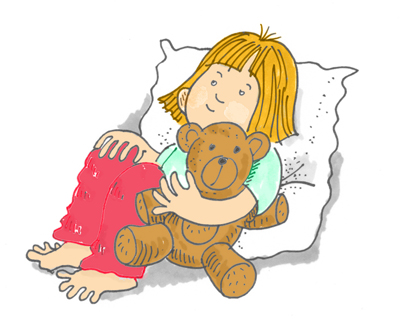
In many of our books we talk about "Positive Time Out." There are several points that need to be made regarding time out for children who have not yet reached the age of reason:
1.) Any kind of time out should not be used with children under 3 1/2 years old. Until children reach the age of reason, which starts around three (and is an ongoing process that even some adults have not fully mastered) supervision and distraction are the most effective parenting tools. This means simply that young children need constant supervision and removal, kindly and firmly, from what they can't do and guidance to an activity they can do. If they can't understand reasoning, why try to reason?
Remember, they can't understand the reasoning behind punishment either. Punishment may stop the behavior for the moment, but what long-range message has the child received? Are they deciding, "I'm bad. I'll get even and hurt back. I'll hit others when I'm bigger. Yelling at people is a good way to communicate. I won't get caught next time." Children aren't consciously aware of the decisions they are making, but they are making decisions nonetheless. (The book, Positive Discipline for Preschoolers has a lot of information regarding developmental and age appropriate behavior.)
2.) There are usually exceptions. We know of one mother who used Positive Time Out successfully with her 18-month-old child (obviously because of her attitude). She would say to her child, "Would you like to lay on your comfy pillow for awhile?" Sometimes he would just toddle off to his pillow and lie down until he felt better. If he hesitated, she would ask, "Do you want me to go with you?"
3.) The procedure for setting up Positive Time Out for children over three is explained thoroughly in most of our books. Meanwhile, before the age of 3-1/2, go to time out with your child. Say, "Let's take some time out to read a book or listen to music until we feel better." That way you are modeling the purpose of Positive Time Out.
4.) It is so important to know that parents need many different parenting skills and tools. There is never one tool (or three or even ten) that is effective for every situation and for every child. Sometimes Positive Time Out is effective for children over the age of three, and many times something else would work better. This is why we give several suggestions for every problem covered in Positive Discipline A-Z.
5.) Try hugs. (See the article on Hugs.) Since misbehaving children are discouraged children, the best way to help them stop misbehaving is to help them feel encouraged. Where did we ever get the crazy idea that in order to help children do better, first we have to make them feel worse? Children do better when they feel better. Asking for or giving a hug is just one possibility. Remember, there isn't any tool that works every time.
6.) Please learn about developmental and age appropriate behavior. You may be expecting things that are beyond the developmental capability of your child.
What to do when the Positive Time Out Space doesn't work.

